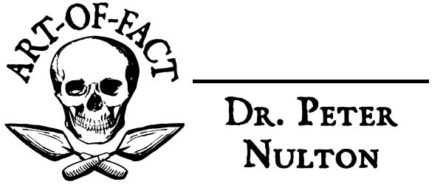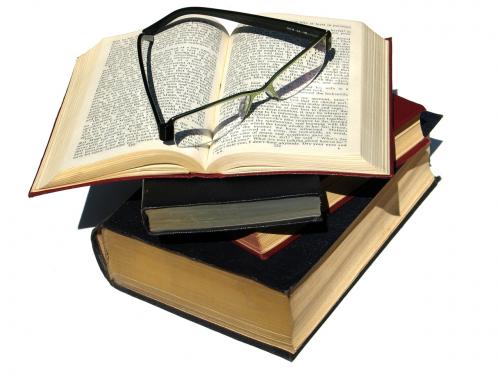Assignment B : Descriptive Essay
This is a basic form of art-history writing that involves a detailed description of a work of art. The basic idea of the assignment is to visit a museum, choose a piece that falls within the guidelines of the course (e.g. Greek or Roman for a course on Greek or Roman Art, Prehistoric to Medieval for an introductory survey), and describe it in detail. Please do not write a descriptive essay based on photographs or information in books. The very purpose of this assignment is to have eyes-on access to the work in question. Assignment A, the research paper, is appropriate to objects you have only seen in photographs.
STEP 1: Visit a museum. Depending on where you live, this doesn’t have to be very difficult. See the list of recommended museums for inspiration, or find another one that is near your home, your school, or simply conducive to your travel plans. It may help to print out this section of the website and take it with you. For students in RISD’s ARTH*H102, the museum choice is necessarily the RISD Museum.
STEP 2: Pick a work to write on. You can pick your friends, you can pick your work to write on, but you can’t pick your friend’s work to write on. Choose a work that fits the guidelines (generally a work from the art historical periods covered in the course, or in the case of the Slater Museum, a copy of a work from that period is acceptable), but choose one that interests or inspires you. You will find the paper much easier to write if your subject intrigues you on some level.
STEP 3: Look at the work. Look at it hard. Walk all the way around it, if possible. Then take a few steps back (watch that case behind you, you don’t want your backpack to hit it) and try to take it all in. You will be repeating this step as you take notes for your paper, or even write it on the spot, if possible (if you can’t bring your computer in, bring a pad and pencil, then type it up when you get home). Try to take your observations from more general to more specific. Just a few examples of questions to ask yourself:
Round one: kind of object (painting, sculpture in the round, relief sculpture, vase, mosaic, etc.) and media (materials used to make the artwork)
Round two: iconography (subject matter)
Round three: pose, shape, use of space, dress or adornment
Round four: compositional issues (How is the piece arranged? If it is a sculpture, does your understanding and appreciation of it benefit from walking around it and seeing it at different angles? Or was it intended to be seen from one angle only?) style (is the work naturalistic, realistic, idealized, stylized, conceptualized etc?) perspective (If it is a painting or mosaic, is there an attempt to make the picture look three dimensional? )
Round five: condition (Is the object damaged? How?), conservation (steps the museum has taken to prevent further degradation of the piece), restoration (steps the museum or previous owners took to fill in the missing parts of a piece and make it look whole), installation (Where did the museum decide to put it? How is it supported? How is it lit?)
In addition, think about the terms and jargon you have learned throughout the semester, or that are included in your textbook. Do any of them apply aptly here? Which ones?
If you make careful observations in these steps, you will certainly have enough material to write a brief paper from your observations. If you are about to leave the museum and realize that your notes will not be enough for a paper, stay and look at the object again!
Going through these rounds will give you some guidance on what kind of things to observe in your work. Before you leave, you may also want to copy some vital information off the museum label—but not too much. The name of the piece, date and provenance (its geographical origin, if known), and possibly the museum accession number. If you like (and it is possible), take a photo either for your own souvenir or for inclusion in your paper.
STEP 4: Writing.
First of all, you want to start with the basics. What museum did you visit? Where is it located (city is enough information). Now from the museum label: name of work you chose to write on, date and provenance.
IMPORTANT: Do not copy anything else from the museum label. Not only is it not in line with the intention of the descriptive essay assignment, but there may be errors on it. In addition, the intent of a museum label is often to summarize the research of various scholars in order to contextualize the work in time, place, and in relation to other examples of the same kind of art. The descriptive essay is not about doing this. There is no need to contextualize the work; it should be treated as an end in itself.
Once you have done this, take your notes and observations from step three. Try to organize them into some kind of logical order (index cards and word processors make useful tools here), usually from most general to most specific, from forms and masses to details. The rounds I offered in line three are useful for this, but by no means the only way to organize the paper.
Then write your observations into complete sentences and paragraphs. Once you have your ideas in order, it is just a matter of streamlining the writing, smoothing it out. Add transitions, sentences that help guide you from one paragraph to another.
College papers ought to be written in a somewhat formal academic style. You can leave out complaints about how much dirty laundry you have to wash tonight, or how great that kegger was last night. Adding quotes like these may be funny, but it gives the impression that you are not taking the assignment seriously. No, I am not being hypocritical. I added the funny little bits here and there because this is not my assignment, and because I want to keep you interested. You can usually assume that your audience for a research paper (usually the professor) has enough reasons to keep reading. Leave out the shenanigans.
STEP 5: Citations.
For a descriptive essay assignment, you shouldn’t need lots of citations. You should simply cite the information that comes from the museum label. But if you find yourself making use of other sources (and you probably shouldn’t), look at the citation information under the research paper assignment
Citations are an important way of avoiding accidental plagiarism.
STEP 6: Final checklist.
1) Title page or heading: Personally, I don’t care about its format, as long as it has the necessary information:
a) your name
b) course name or number
c) semester and year
2) You probably want to give the paper a title that is descriptive of your topic.
3) The paper itself. Is it the right length? Did I think I was clever by using 2-inch left and right margins, or 2.4 line-spacing? Is it the right length if I rethink and correct those little discrepancies because I know they will be noticed?
4) Citations: less important in the descriptive essay, because the only source you should be using is the museum label, and there in a limited fashion (mainly to identify to me what work you are writing on)
5) Staples make it much less likely that the pages of your paper will end up separated from one another or lost. Barring this, get a paperclip. If you don’t have that (and why not?!) bend the edge together.
STEP 7: Deadline. Turning your paper in on time is important. You could lose letter grades for it being late. If you are a perfectionist, it may just be time to give it up and hand it in. Chances are the minor improvements you will make during the extra time you keep it won’t be worth the “late paper” drop in grade.

